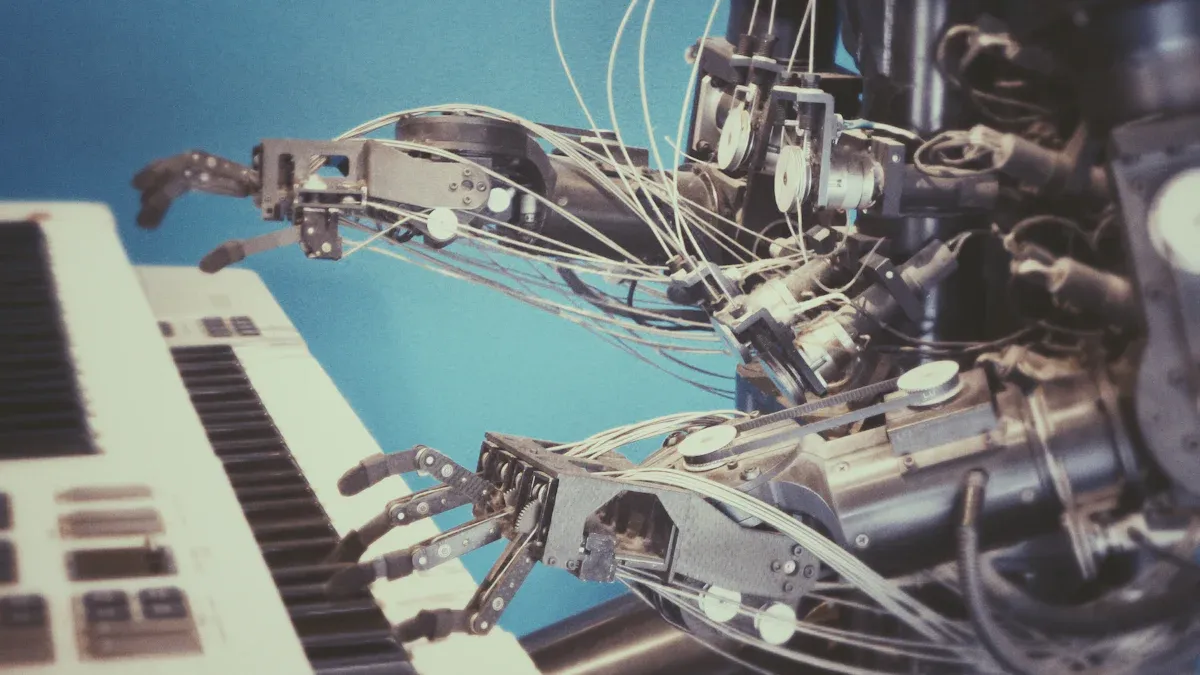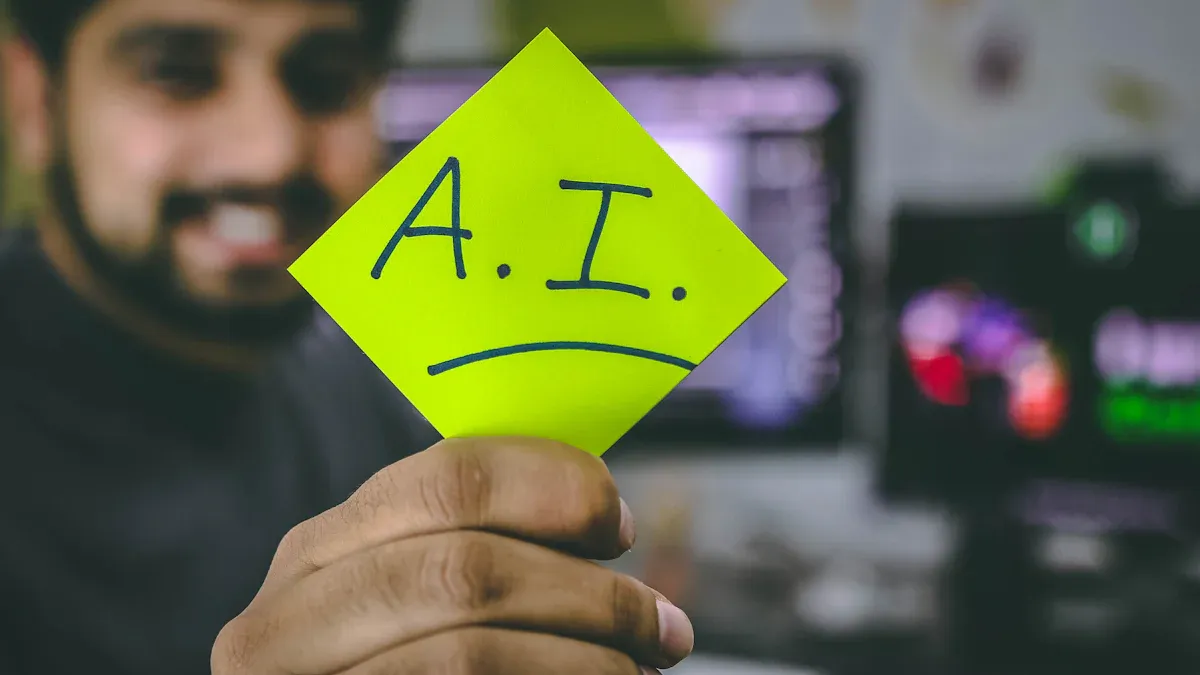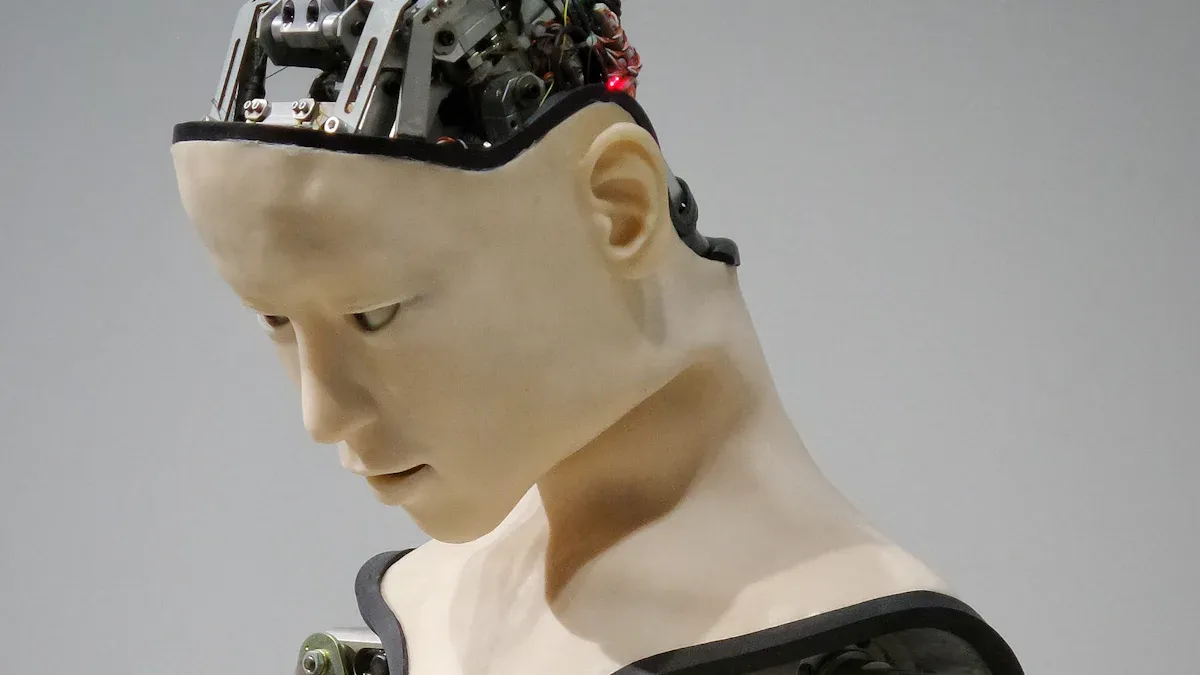How AI is Reshaping Leadership Hiring in 2025

Artificial intelligence is revolutionizing AI-Powered Leadership Hiring by transforming how companies recruit top leaders. By 2025, AI-based hiring will be essential for identifying talent. Businesses are leveraging AI to streamline the hiring process, making it faster and more efficient. Approximately 95% of initial candidate evaluations are conducted using AI tools. This shift accelerates decision-making and aids in identifying leaders who align with company objectives.
AI does more than just save time; it addresses longstanding issues in hiring, such as hidden bias and the lack of diversity in leadership roles. Currently, around 87% of companies are utilizing AI hiring tools, which promote a fairer and more inclusive hiring process. Additionally, leaders are acquiring AI skills to stay relevant. The landscape of hiring is evolving to meet the demands of modern leadership.
Key Takeaways
AI makes hiring faster and easier, helping companies fill top jobs quickly.
It lowers bias in hiring by focusing on skills, not opinions, to support fairness and diversity.
AI tools use data to guess how well a person will do, helping match them with company needs.
People are still important; mixing AI with human choices makes hiring fairer and better.
As AI grows, leaders need to learn AI skills to keep up and handle changes in hiring.
Challenges in Executive Recruitment
Time-Consuming Processes
Inefficiencies in sourcing and screening candidates
Finding and reviewing candidates for top roles takes time. This happens because there are many applications to go through. Picking the right person for leadership is hard. Studies show 50-70% of leaders fail within 18 months. Poor hiring methods can hurt how well a company performs.
The time to hire depends on the industry, as seen below:
Industry | Global Time to Hire (days) | US & Canada Time to Hire (days) |
|---|---|---|
IT/Technology | 30 | 30 |
Legal | 32 | 28 |
Healthcare | 28 | 27 |
Logistics/Supply Chain | 12 | 7 |

These delays make it harder to fill important roles quickly.
Delays in decision-making for leadership roles
Hiring leaders often takes longer because many people are involved. Industries like government and aerospace have the slowest timelines. Their average hiring times are 53.8 and 32.6 days. These delays can cause companies to miss out on great leaders.
Bias in Traditional Hiring
Unconscious bias in resume reviews and interviews
Hidden bias is a big problem in hiring leaders. Research shows 60% of workers feel bias, and 64% have seen it happen. This can lead to unfair decisions and fewer diverse leaders being hired.
Statistic | Percentage |
|---|---|
Employees reporting bias | 60% |
Employees witnessing bias | 64% |
Workers comfortable discussing bias | 73% |
Employees ignoring bias | 30% |
Limited diversity in leadership positions
Bias in old hiring methods often means less diversity in leadership. This hurts company culture and slows innovation. Fixing these biases is key to making hiring fairer.
Assessing Cultural Fit
Challenges in evaluating alignment with organizational values
It’s hard to see if a candidate matches your company’s values. AI tools use online data to create profiles. But this might leave out good candidates who don’t fit the usual pattern.
Cultural fit is more than skills. It’s about matching values, work style, and personality with the company. Finding this match needs deep talks and understanding, which AI cannot provide.
Over-reliance on subjective judgment
Some managers use personal opinions to judge cultural fit. This can lead to unfair choices and missing out on strong leaders. A clear process is needed to make hiring fair and accurate.
AI-Powered Solutions for Leadership Hiring

AI-Driven Screening and Shortlisting
Automated resume parsing and ranking
AI tools now help sort and rank resumes quickly. They check for skills, experience, and qualifications in seconds. This saves time and avoids mistakes from manual work. No good candidate is missed. For example, companies using tools like Intervu.ai save 75% on screening costs. Hiring costs for executives are also 30% lower, making hiring smoother.
Evidence Description | Statistic |
|---|---|
Lower hiring costs | 30% |
Screening cost savings | 75% |
Efficiency gain for executives | 25% |
More diversity in shortlisted candidates | 30% |
Job offer acceptance increase | 18% |

Identifying top candidates using AI algorithms
AI ranks candidates based on how well they fit leadership roles. It looks at their skills, past work, and behavior patterns. This helps find the best people faster and more accurately. It saves time and ensures top talent is considered for key positions.
Predictive Analytics in Decision-Making
AI tools predicting leadership success
AI predicts how well a candidate might do in the future. It studies past achievements and leadership skills to guess long-term success. AI finds patterns in large data sets, making hiring smarter. This helps companies adjust quickly and hire with confidence.
Data-driven insights for smarter hiring decisions
AI combines behavior data with work information to improve hiring. It gives better predictions and deeper insights about candidates. Predictive tools also help build a strong leadership team. Using AI ensures hiring matches company goals and needs.
Cultural Fit Analysis with AI
AI assessing communication styles and personality traits
AI tools check how candidates communicate and their personality traits. They study online profiles, interviews, and written answers. This helps see if someone fits the company culture. Studies show 81% of managers think cultural fit lowers turnover, making it very important.
Matching candidates to organizational culture
AI compares candidates’ traits with company values to find matches. A study says companies with strong cultures have lower turnover rates. For example, they lose only 13.9% of workers compared to 48.4% in weak cultures. AI helps hire leaders who improve company culture and productivity.
Benefits of AI in Executive Hiring
Enhanced Efficiency
Faster candidate sourcing and evaluation
AI tools make hiring much quicker and easier. For example, Hilton cut their hiring time by 90% using AI. These tools scan thousands of resumes in seconds. They find the best leaders for top jobs fast. This saves time for smarter hiring decisions instead of long manual reviews.
AI also handles repetitive tasks like sorting resumes and first tests. This gives more time for important steps like interviews. Companies using AI tools cut hiring time by 75%. This helps them hire great leaders faster.
Streamlined hiring workflows
AI combines all hiring steps into one easy system. It helps with finding candidates and setting up interviews. This makes the process smooth for everyone. It saves time and improves how hiring works. Recruiters and managers can work better together. This leads to faster and smarter decisions.
Reducing Bias in Recruitment
Objective, data-driven candidate evaluations
AI removes bias by using fair data to judge candidates. It looks at skills and experience without personal opinions. For example, Unilever used AI and increased diversity by 50%. AI focuses on facts, making hiring fair for everyone.
Promoting diversity and inclusion in leadership roles
AI helps make hiring more diverse and fair. A study showed companies using AI had 32% more diverse hires. AI also writes job ads that attract more women. This led to 20% more women applying. These tools help build teams that are fair and creative.
Higher Quality of Hires
Identifying candidates with strong leadership potential
AI checks for skills and leadership qualities needed for top jobs. Video interviews with AI can study how people talk and decide things. Leaders picked by AI are 14% more likely to succeed in interviews. This helps find the best people for the job.
Aligning hires with long-term organizational goals
AI predicts if a leader will do well in the future. It uses past data to see if they fit the company’s goals. Companies using AI keep 20% more employees. This shows AI helps build strong and lasting leadership teams.
Ethical Considerations in AI-Powered Leadership Hiring
Transparency and Accountability
Making AI decisions clear and understandable
It’s important to trust the tools used for hiring. AI must explain how it makes decisions. This helps you understand why a candidate is chosen or flagged. For example, explainable AI shows why someone ranks high or needs review. Sharing how AI is trained and handles bias can ease concerns. Regularly checking AI systems ensures they follow rules and stay fair.
Explaining AI's role in hiring
When using AI, tell candidates and teams how it works. Being open builds trust and clears up confusion. For instance, let candidates know AI helps with early screenings. This can reduce worries about unfair treatment. As laws demand more openness, these steps also meet legal rules.
Fairness and Bias Mitigation
Fixing bias in AI systems
AI can pick up bias from its training data. You need to fix this to keep things fair. Ethical AI avoids unfair practices and supports equality. For example, AI tools for testing have cut bias by 30%. These tools help bring more diversity to leadership roles.
Checking AI systems for fairness
To stay fair, check AI tools often for problems. These checks find and fix any new biases. They also make sure AI follows privacy laws and keeps data safe. By focusing on fairness, you can match hiring to your company’s values.
Human Oversight in AI-Driven Hiring
Combining AI insights with human judgment
AI gives helpful information but can’t replace human thinking. Use AI to support, not replace, your decisions. For example, AI analyzes data fast, but humans add context and emotion. This mix helps you make better hiring choices.
Keeping hiring decisions ethical
Humans should always make the final hiring call. Leaders need to see beyond what AI measures, like long-term fit. Using AI as a helper keeps hiring fair and accurate. By mixing AI’s speed with human skills, you can build a strong leadership team.
The Future of AI in Recruitment for Leadership Roles

Trends in AI-Powered Leadership Hiring
More companies using AI for hiring
AI use in hiring is growing fast. By 2024, it jumped from 26% to 53%. This shows how businesses rely on AI to make hiring easier. About 76% of recruiters say AI saves time. Candidates found through AI are 18% more likely to accept job offers. These tools are now key for finding great leaders.
AI working with other HR tools
AI is changing how hiring works by teaming up with HR systems. These tools make hiring smoother, from finding candidates to onboarding them. For example, AI uses data to predict future hiring needs. It also helps write better job ads and find diverse candidates. These updates help AI match your company’s goals.
Innovations in Executive Recruitment
AI helping candidates in real-time
AI tools now talk to candidates instantly, making their experience better. They offer personal advice and virtual career tips. AI remembers past chats to send custom messages. It also gives feedback after interviews, building trust and fairness.
Innovation Type | Description |
|---|---|
Personalized Help | AI gives tailored advice to improve the candidate experience. |
Tracking Candidate History | AI remembers past chats to send custom updates. |
Virtual Career Tips | AI offers advice about jobs and industry trends. |
Feedback After Interviews | AI provides helpful feedback to candidates, building trust. |
Smarter AI tools to find future leaders
AI now studies past work and career paths to spot leaders. These tools help pick people who fit your company’s long-term plans. Using smart data, you can build strong leadership teams. This shows how AI is shaping the future of hiring.
Human-AI Collaboration
Teaming up AI with HR experts
AI helps you make better choices, but humans are still needed. Together, AI and people improve hiring results. For example, candidates chosen by both are 14% more likely to succeed in interviews. This teamwork makes hiring faster and fairer.
Getting ready for AI in hiring
To stay ahead, you need to prepare for AI’s role in hiring. AI tools help leaders grow and keep them longer, improving retention by 20%. AI also helps new hires fit in and tracks their progress. These tools help you adjust to changes in hiring leaders.

AI is changing how leaders are hired by fixing problems, cutting bias, and helping make better choices. New tools make hiring faster and more effective. Leaders are learning AI skills to stay ahead in their jobs.
Being fair is still very important. Clear rules and human checks keep AI hiring honest and trusted.
The future of hiring leaders looks bright. More companies use AI to find great talent and match hires with long-term plans.
Impact Area | Details |
|---|---|
Using AI | |
Learning AI Skills | Leaders know they need to learn AI to stay skilled. |
Better Hiring | AI helps companies make smarter and faster hiring choices. |
FAQ
What does AI do in leadership hiring?
AI finds top candidates by studying resumes, skills, and behavior. It handles boring tasks, saving time and improving results. AI also guesses future success and checks if candidates fit company goals.
How does AI make hiring fairer?
AI uses facts, not opinions, to judge candidates. It removes hidden bias from resumes and interviews. For example, AI writes fair job ads to attract different kinds of people.
Can AI check if someone fits the company culture?
AI looks at how people talk, act, and their values. It matches them with your company’s culture. But you should still use human judgment for a full review.
Is using AI for hiring fair?
AI hiring is fair if you keep it honest and clear. Check AI tools often and explain how they work. Always tell candidates about AI’s role to build trust.
Will AI take over recruiter jobs?
AI helps recruiters by doing simple tasks and giving useful data. But it can’t replace human thinking, care, or decisions. Using both AI and people makes hiring better.
From recruiting candidates to onboarding new team members, MokaHR gives your company everything you need to be great at hiring.
Subscribe for more information

